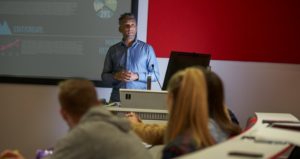Researchers Daniel Smith and Thomas Valentine begin by making an important point. At two-year colleges “the classroom serves as the epicenter of involvement.” (p. 134) The same could be said for commuter campuses as well. Students who attend two-year colleges often do so part-time and regularly do so combining school with work, family, and a host of other responsibilities. The same can increasingly be said of many students who commute to campus to take classes. At many institutions students now spend considerably less time on campus, and so if they are to be engaged with academic life, that involvement pretty much begins and ends in the classroom. So, are faculty using instructional techniques that do involve students in the classroom?







